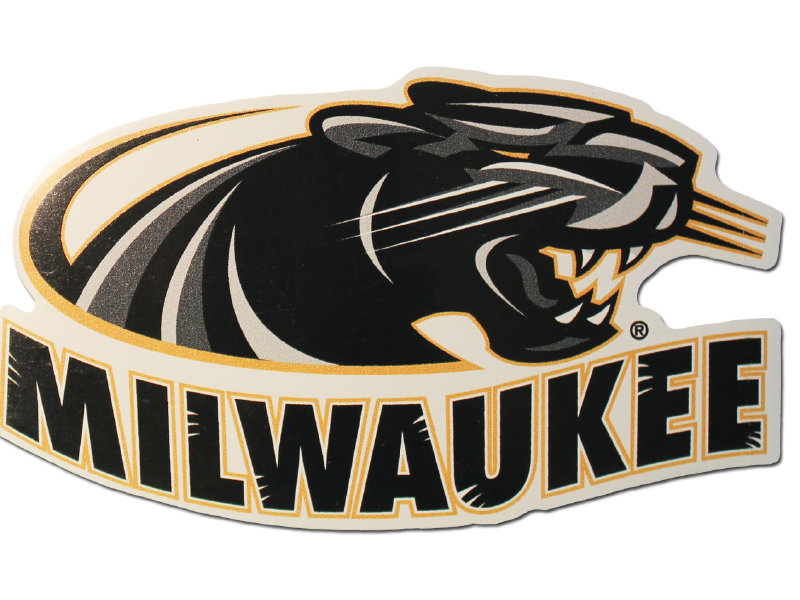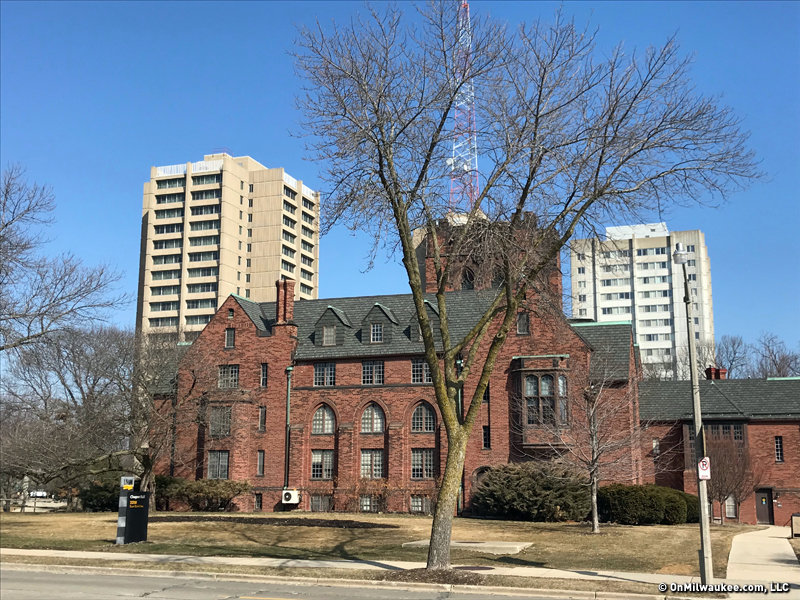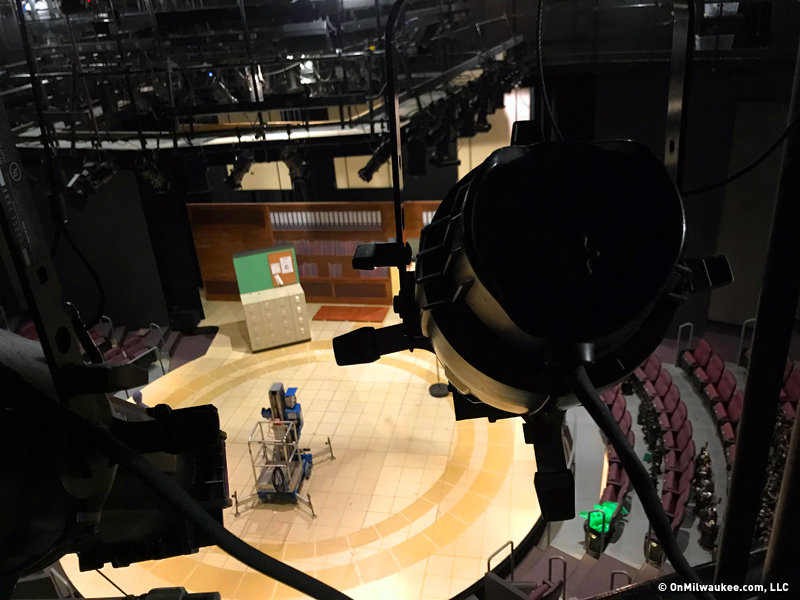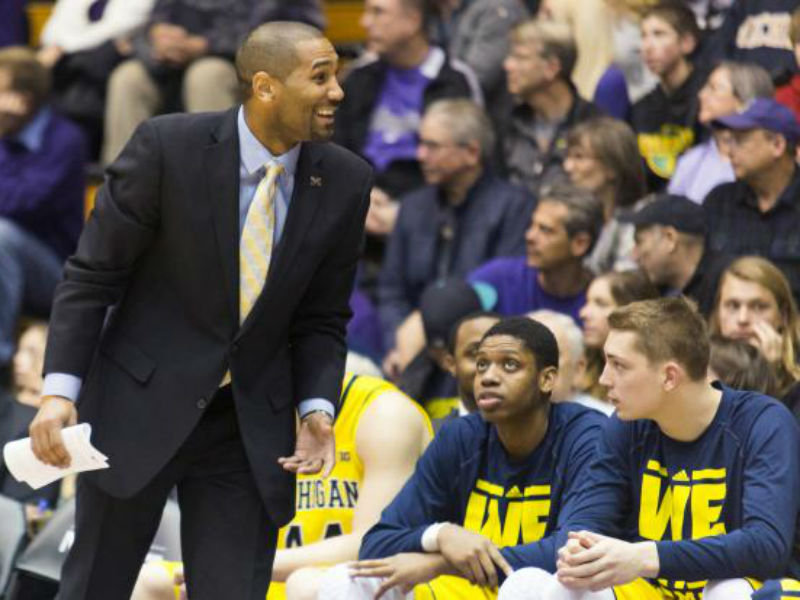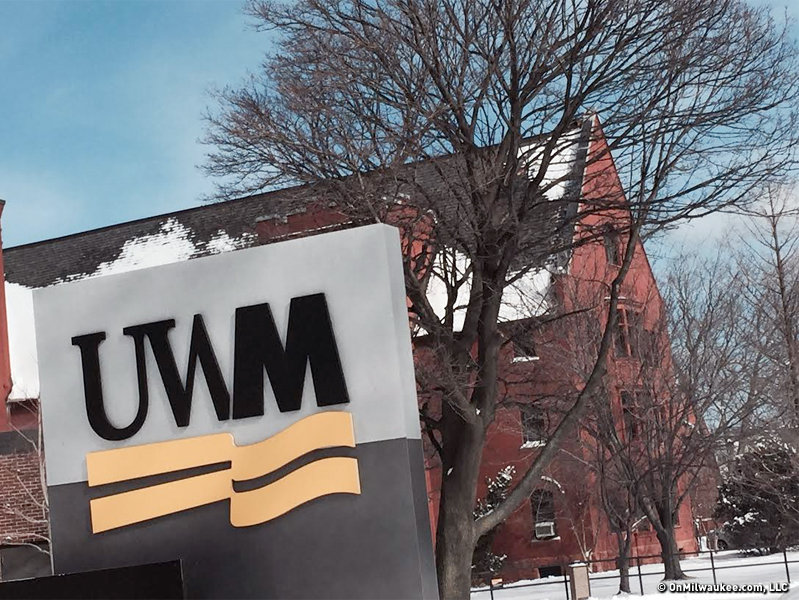If you are going to do something, do it right.
Unfortunately, for too many years, UWM has been half-assing it when it comes to their intercollegiate athletics department. Their facilities are inadequate; their leadership has been timid at best and bombastically incompetent at worst.
In other words, if it is possible to screw up a major metropolitan university's athletics department any worse than what the inglorious history of the debacle on Milwaukee's East Side is, I'd like someone to point it out to me.
And since everyone else has had their shot, let me debunk some of the myths that are out there right now.
Myth No. 1: "There is no room to build an athletic village on the UWM campus"
Nonsense. Looking at a satellite picture of the campus, the green space north of the Klotsche Center is just about the perfect size for a legitimate arena and a small stadium. The area is called "Downer Woods" and there is seemingly no information on the parcel of land, other than it is listed as a location on the campus map.
Now, there may be some environmental efforts going on with the area, but that shouldn't be a deterrent. Land on the East Side is tight, and quite frankly, there isn't anywhere else to go. So bulldoze some green and do what you have to do. The tree huggers will be up in arms for a few days, but so what? College students looking to protest everything under the sun will simply move on to something else once one of them gets distracted by some shiny object off in the distance. Trees get ripped out for buildings all the time, especially in cities. Welcome to the real world, Moonbeam.
As to why an athletic village is needed, look at what the situation is currently. The men's basketball team plays downtown and the baseball team plays in Glendale. The women's tennis team, with no facility whatsoever, practice and play at Le Club near Brown Deer Park. For a university the size of UWM to have as few athletic facilities as they do is laughable.
Milwaukee is an urban city; UWM is an urban campus. Forest preserves are not things that are mandatory in such areas.
Myth No. 2: "No school can afford to start up a football program nowadays."
That is just factually incorrect. Since 2000, Florida Atlantic (2001), Florida International (2002), Georgia State (2010), South Alabama (2009), and Texas-San Antonio (2011) have all started fielding Division I football programs. Several others, such as U-Mass, U-Conn, South Florida, Troy, and Texas State have all made the jump to the "Bowl Subdivision" (FBS) from the lower class "Championship Subdivision" (FCS) in recent years as well.
For reference purposes, all of the aforementioned schools have strikingly similar enrollments as UWM, with the exception of Florida International (approximately 17,000 more students than Milwaukee) and South Alabama (about 15,000 fewer students than UWM).
Florida International and Florida Atlantic have constructed their own new football stadiums for their new programs to play in. It can, and has, been done. But the only way anything got accomplished was with bold leadership and a clear vision for what each university wanted to be in terms of intercollegiate athletics.
Myth No. 3: "The Panthers never won anything anyway, so why should it even matter if they flounder and flail in inadequate facilities?"
UWM has the state's lone Division 1-A baseball program. Unfortunately, they also have the worst college ballpark in the country in which to play in at Henry Aaron Field. Not only is the Panthers home field not near campus, it is eclipsed by many high schools in terms of amenities. It is not merely inadequate; it is downright embarrassing. Head Coach Scott Doffek should earn "coach of the year" honors in the Horizon League every season for the miracle he has been able to pull off with the pathetic facility he has to recruit to and win in. Yet somehow he does.
But the same can be said for many of the Panthers athletic programs. By and large, they have been successful, despite their limitations. UWM has more Horizon League all-sports conference titles than any other school all-time. In the past 10 years, the Panthers and Butler have monopolized the McCafferty Trophy, awarded to the conference's all-sports champion, with Milwaukee taking the crown three years in a row from 2004-06.
Somehow, the Panthers win. It is about time someone realizes it.
Myth No. 4: "The university won't ever fund anything for the athletic department, so why bother even bringing it up?"
The problem with this argument is that just six years ago, UWM Pavilion, the centerpiece home to the school's intercollegiate athletics department opened. The building, which was desperately needed, cost $40 million and houses coaches offices, team rooms, academic assistance, physical therapy, and athletic training facilities.
But while a permanent home for the athletic department was absolutely needed, for just double the cost, an entire football stadium could have been built. For that dream to become a reality, will it take some hard work and rolling up of sleeves? You bet. Will there need to be bake sales and car washes to help pay for Panther Stadium?
Uh huh. Probably for the next 40 years or so.
But so what?
Rome wasn't built in a day. Engelmann Stadium recently underwent a wonderful renovation and is a testament to what hard work and a sense of community can do.
Florida Atlantic's FAU Stadium opened in 2011 at a cost of $62 million. It has 30,000 seats and there isn't a bad one in the joint.
Likewise, Florida International's Alfonso Field re-opened in 2007 after undergoing a complete transformation to coincide with the Golden Panthers fielding a football team. The stadium cost $54 million and seats 23,500, with an additional 5,000 seats planned for the future.
If UWM builds a football stadium, and builds it correctly, all of a sudden they have a new revenue stream for events such as concerts, minor league football games, and soccer matches; perhaps even a future MLS franchise would consider Milwaukee.
But it takes leadership. And while that starts in the chancellor's office, the black hole of command that has been the athletic directors the Panthers have employed over the years has left them in the precarious position of being on the brink of extinction.
To replace longtime and genial athletic director Bud Haidet in 2009 with the in-over-his-head George Koonce was a complete disaster. Replacing Koonce less than a year later with the squirrely Rick Costello was an epic failure. Both Koonce and Costello talked big games when they were hired but were woefully short in results, chafing the entire university community along the way.
So now the entire athletic department is under review. It probably should be, but abandoning the whole effort is not the way to go about fostering goodwill with your alumni and students.
The reason that schools like Texas-San Antonio and Florida Atlantic have invested so heavily into their athletics department is to expand their reach and foster a sense of community. But just as Miller Park was not built in a day, the leaders at these schools did not just simply snap their fingers and stadiums appeared. It took vision. It took hard work. It took an entire university working towards one goal.
There is no mistaking that UWM athletics is at a crossroads. They have just enough invested to care, yet not invested to be stuck with a bunch of white elephant facilities that will just sit there unused like a fruit cake at Christmas should Chancellor Michael Lovell decide to pull the plug.
If the Panthers were to simply dissolve into a footnote of city history that will be a damn shame. But if they are to move forward, they cannot continue on with the status quo. Important decisions have to be made, and they have to be made soon.
So, which is it, Panther Nation? Are you in, or are you out?
Doug Russell has been covering Milwaukee and Wisconsin sports for over 20 years on radio, television, magazines, and now at OnMilwaukee.com.
Over the course of his career, the Edward R. Murrow Award winner and Emmy nominee has covered the Packers in Super Bowls XXXI, XXXII and XLV, traveled to Pasadena with the Badgers for Rose Bowls, been to the Final Four with Marquette, and saw first-hand the entire Brewers playoff runs in 2008 and 2011. Doug has also covered The Masters, several PGA Championships, MLB All-Star Games, and Kentucky Derbys; the Davis Cup, the U.S. Open, and the Sugar Bowl, along with NCAA football and basketball conference championships, and for that matter just about anything else that involves a field (or court, or rink) of play.
Doug was a sports reporter and host at WTMJ-AM radio from 1996-2000, before taking his radio skills to national syndication at Sporting News Radio from 2000-2007. From 2007-2011, he hosted his own morning radio sports show back here in Milwaukee, before returning to the national scene at Yahoo! Sports Radio last July. Doug's written work has also been featured in The Sporting News, Milwaukee Magazine, Inside Wisconsin Sports, and Brewers GameDay.
Doug and his wife, Erika, split their time between their residences in Pewaukee and Houston, TX.

